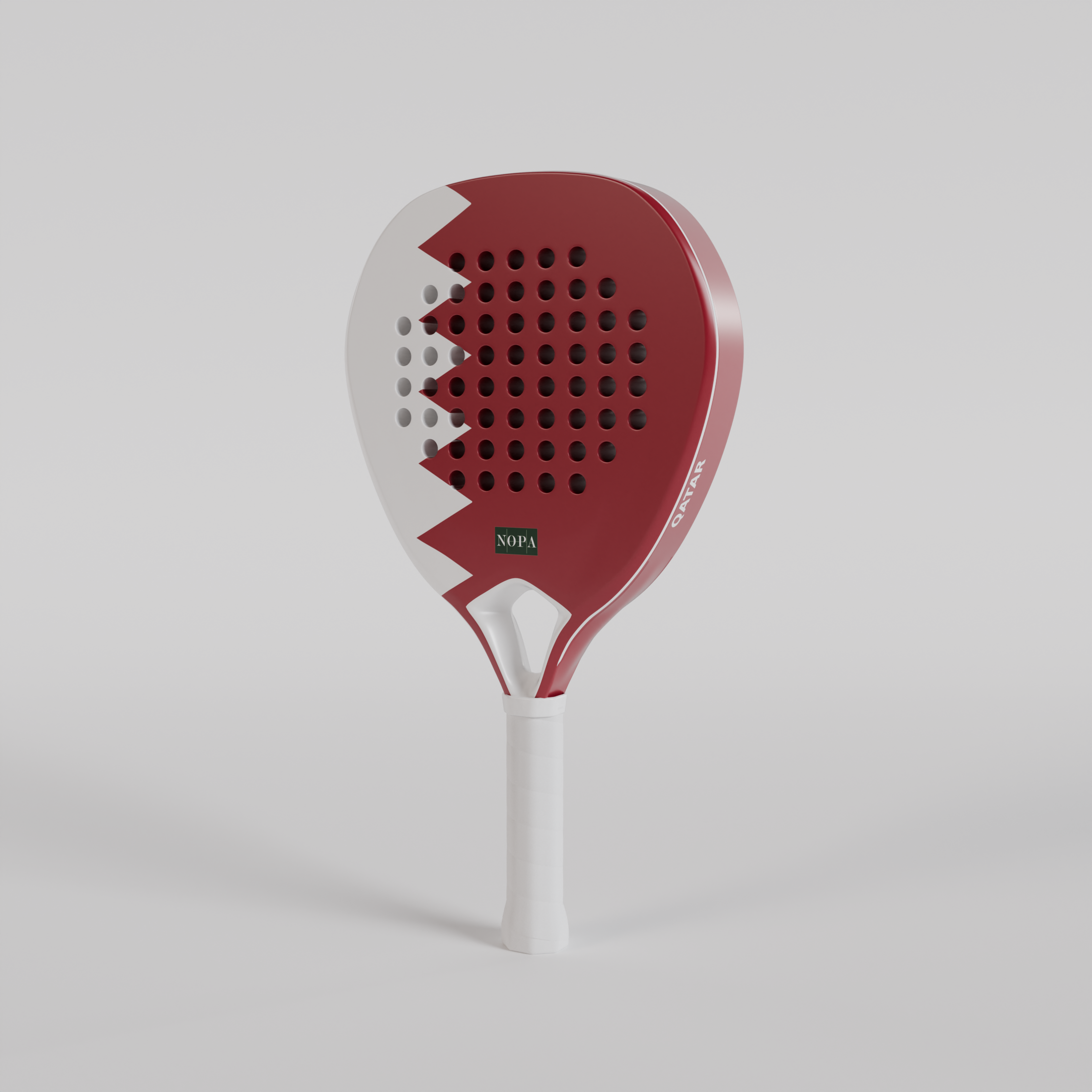Diamond shape: Diamond-shaped racquets are designed for advanced players seeking maximum power. The sweet spot is smaller and located higher on the racquet, demanding more precision and skill to hit effectively, but also offering more intensity if shots are executed correctly. These racquets are typically used by aggressive players who like to frequently hit smashes and powerful volleys.
Teardrop shape: Teardrop-shaped racquets, also called hybrid racquets, provide a balance between vigor and precision. The sweet spot is slightly higher up on the racquet, offering a blend of the precision of a round shape and the potency of a diamond shape. This makes it a versatile choice for intermediate players who are developing both their defensive and offensive skills.
Round shape: This shape offers a larger sweet spot (the surface area where the racquet hits the ball in optimal conditions), making it easier to hit accurate shots even if you don’t strike the ball perfectly. This is ideal for beginners or defensive players who prioritize control over power. The larger sweet spot ensures that mishits are minimised, allowing for a more forgiving experience on the court.
Fiberglass racquets offer a softer, more controlled feel, making them ideal for beginners. They provide a forgiving hitting surface that helps manage mishits, though their durability is lower compared to carbon fiber options.
1K carbon racquets featuring a 1K carbon layer incorporate a lower density of carbon fibers. This results in a more flexible, forgiving surface that enhances comfort and control, perfect for players who favor a softer touch over raw power.
3K carbon racquets built with 3K carbon strike a balanced compromise. With a moderate fiber density, they deliver improved responsiveness and durability compared to 1K, making them a great step-up option for players seeking enhanced performance without sacrificing control.
12K carbon racquets utilizing 12K carbon boast a high density of carbon fibers, providing superior stiffness and energy transfer. This advanced construction yields maximum power and precision, rewarding accurate play with explosive performance, though it requires more refined technique.
(350-360g) These lighter racquets are easier to handle, offering quick, smooth manoeuvrability and less strain on the player’s wrist and arm. Lightweight racquets are perfect for beginners or players who rely on speed and quick reactions. However, they may lack the strength needed for strong, attacking shots.
(360-370g) These Racquets offer a balance between power and control. They provide enough weight to deliver powerful shots while still being manageable for most players. Intermediate players often prefer this weight range as it allows them to develop their game in a comprehensive and versatile way.
370-380g) Heavier racquets are favoured by advanced, strong players in good shape who can handle the added weight. They offer increased power and stability, which benefits aggressive players who dominate with forceful smashes. However, they require good technique and strength to manoeuvre effectively.
Medium-balanced racquets offer a middle ground, providing a blend of energy and control. This even balance is suitable for all-round players who don’t specialize in one particular style but rather adapt to different situations on the court. It’s a versatile choice for those looking to improve their overall game.
Racquets with a head-heavy "High" balance provide more power, making them ideal for aggressive players who focus on decisive aerial shots. The added weight in the head increases the momentum during swings, generating more force behind each shot. However, they can be harder to control, especially in defensive situations.
PRO: Racquets with a PRO balance feature a neutral top-heavy distribution that delivers a potent mix of power and precision. This balance shifts weight slightly towards the head, enhancing momentum for explosive shots while maintaining the control advanced players need. The relatively small sweetspot requires accurate contact, rewarding skilled play with pinpoint accuracy and powerful performance on every swing.








